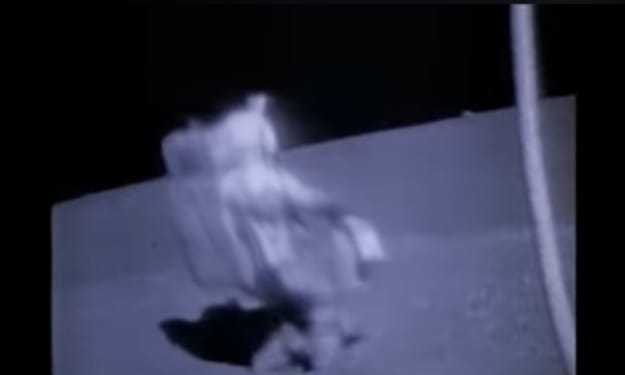What happens to the body after death
The blood begins to settle in the lowest corridor of the body, a process known as hypostasis or livor mortis. Beforehand Postmortem Changes Algor Mortis The body begins to cool down, a process called algor mortis. The rate of cooling depends on several factors, including ambient temperature, body size, and vesture.

When a person dies, their body undergoes a series of physical and biochemical changes. These changes can be divided into several stages, each characterized by specific processes and timeframes. Understanding these stages is vital in fields analogous as forensic wisdom, medicine, and biology. also is a detailed examination of what happens to the body after death.
ImmediatePost- Mortem Changes Cessation of Functions directly after death, the heart stops beating, and blood gyration ceases. This halts the delivery of oxygen and nutrients to cells and the dumping of waste products. As a result, cellular respiration ceases, leading to the accumulation of metabolic waste products like carbon dioxide and lactic acid. Reddishness Mortis Within beats, the skin starts to blench due to the lack of blood flux. This is known as pallor mortis and is most conspicuous in individualities with lighter skin tones.
The blood begins to settle in the lowest corridor of the body, a process known as hypostasis or livor mortis. Beforehand Postmortem Changes Algor Mortis The body begins to cool down, a process called algor mortis. The rate of cooling depends on several factors, including ambient temperature, body size, and vesture.
Generally, the body temperature drops by about1.5 degrees Fahrenheit per hour until it reaches ambient temperature. Rigor Mortis Within 2 to 6 hours, rigor mortis sets in. This is the stiffening of muscles due to biochemical changes, specifically the reduction of ATP, which causes muscle fibers to lock in place. Rigor mortis starts in lower muscles, like those in the face and neck, before progressing to larger muscle groups.
It peaks around 12 hours after death and also dissipates over the coming 24 to 48 hours as the muscles begin to break down. Livor Mortis Livor mortis, or rage, becomes fully established within 6 to 12 hours after death. Blood pools in the lowest corridor of the body due to staidness, causing a sanguine-grandiloquent bruise. The pattern of rage can give important suggestions in forensic examinations,
analogous as the position of the body at the time of death and any posterior movements. IntermediatePost- Mortem Changes corruption corruption begins a numerous days after death, driven by autolysis and corruption. - ** Autolysis ** This is the process by which cells tone- condensation due to the release of internal enzymes. Apkins break down, and papules may form on the skin. - ** corruption ** This involves the action of bacteria and microorganisms that gain in the body posthumous examination. These bacteria, primarily from the gastrointestinal tract, spread throughout the body, producing feasts and contributing to the breakdown of apkins. Signs of corruption include a greenish bruise of the breadbasket
, bloating due to gas accumulation, and the product of foul odors. LatePost- Mortem Changes Active Decay During active decay, the body undergoes significant changes. The bloating becomes more pronounced, and the body may start to rupture due to the pressure of accumulated feasts. Fluids begin to purify from body perforations, and apkins run. Advanced Decay In advanced decay, the rate of corruption slows as the body’s apkins are consumed and broken down. This stage is characterized by a reduction in mass, and the remaining apkins are further degraded by microbial exertion,
insects, and scavengers. Final Stages Skeletonization eventually, the body reaches a stage where soft apkins have fully decomposed , leaving only the shell. The rate of skeletonization can vary greatly depending on environmental conditions, analogous as temperature, humidity, and the presence of scavengers. Diagenesis The final stage of postmortem change is diagenesis, where the remaining bones suffer chemical and structural changes over time.
This process can continue for multitudinous times, ultimately turning bones into fossilized remains under certain conditions. Factors AffectingPost- Mortem Changes Several factors impact the rate and manner of postmortem changes- ** Environmental Conditions ** Temperature, humidity, and exposure to rudiments can accelerate or decelerate corruption. For case, warm and damp surroundings tend to speed up the process.
- ** Body Condition ** The existent's body mass, vesture, and health at the time of death also play significant places. fat individualities may decay hastily due to advanced body fat content, which provides farther material for bacteria to break down.
- ** Presence of Insects and Scavengers ** Insects, particularly blowflies, are among the first to colonize a body, laying eggs that door into naiads( notions) and contribute to corruption. Scavengers can also affect the rate of decay by consuming apkins. Forensic Implications Understanding these processes is critical for forensic investigators who calculate on the stages of corruption to estimate the postmortem interval( PMI), which can give precious information in lawless examinations.
By studying the state of a body and its terrain, forensic experts can make educated estimates about the time and circumstances of death. Conclusion The postmortem changes a body undergoes are a complex interplay of natural and environmental factors. From the immediate conclusion of fleshly functions to the long- term breakdown and eventual skeletonization, each stage provides perceptivity into the processes of life and death. This understanding is not only vital for forensic wisdom but also for comprehending the broader aspects of mortal biology and the life cycle.
About the Creator
Enjoyed the story? Support the Creator.
Subscribe for free to receive all their stories in your feed. You could also pledge your support or give them a one-off tip, letting them know you appreciate their work.





Comments (1)
Hey, just wanna let you know that this is more suitable to be posted in the FYI community 😊